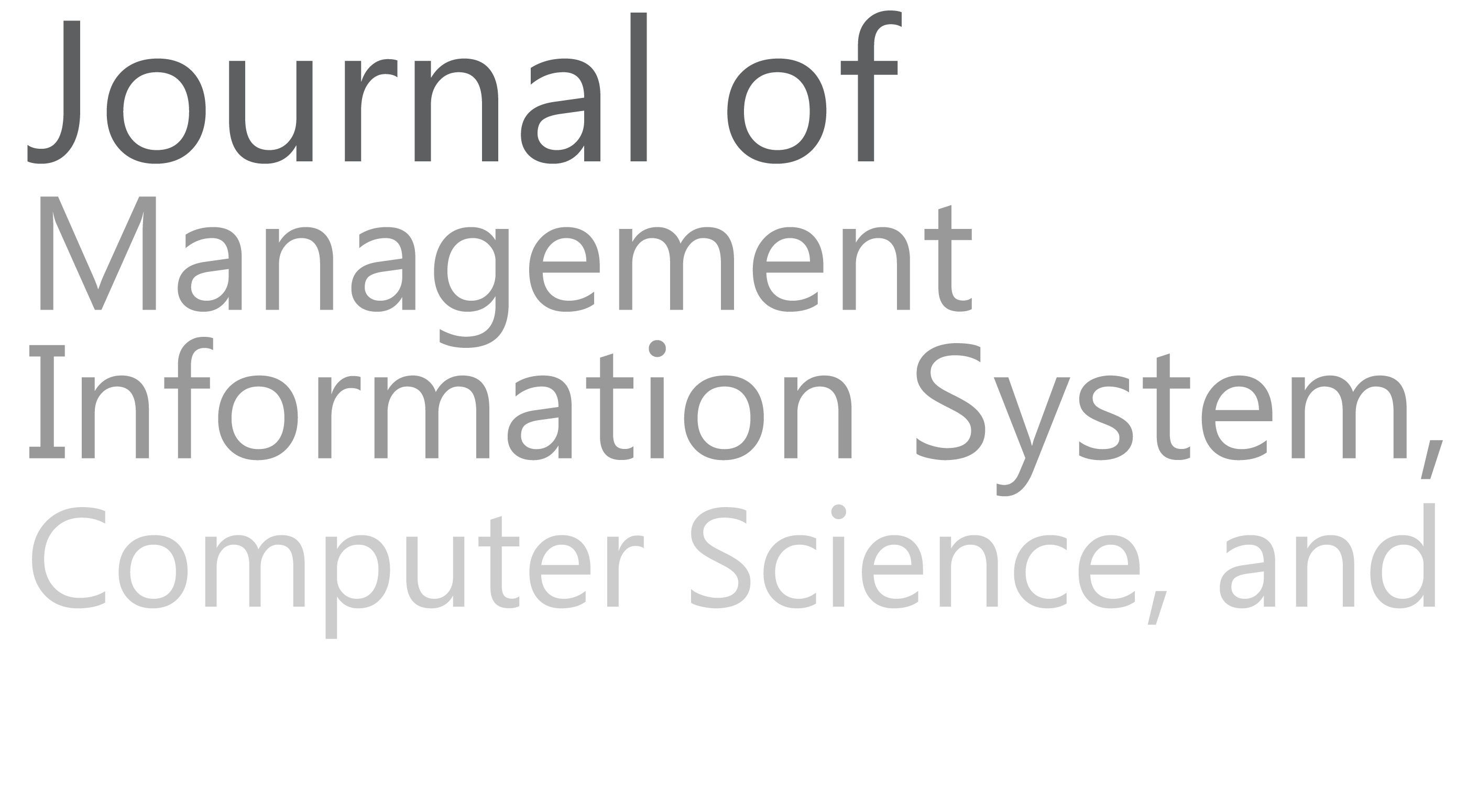Journal Template
Paper’s Title
aAuthor 1, bAuthor 2, cAuthor 3, etc
a,bAfilliation 1 with postal address
cAfilliation 2 with postal address, etc
E-mail: Author 1’s Email, Author 2’s Email, etc
Abstract
Abstract gives an overview of the paper’s content. It must have a maximum of 200 words.
Keywords: three to six keywords. Put in alphabetical order and separated by commas.
INTRODUCTION
You might find JoMISCSA Styles in the Style Pane helpful in formatting your article. This template has several styles for various paper parts.
This section describes the background, contexts, and aims of the research.
Contributions to JoMISCSA journal must be in the form of research or review paper relating directly to the Management Information System and Computer Science area. The manuscripts should be submitted using MS-Word document; in A4 paper format, font Times New Roman 12 point with one-columns and 1.5-space, page numbered, and must be between six to eight pages. Paper margin should be set as follows: Normal margins: Top : 2 cm, Left margin: 2 cm, Bottom margin: 2 cm, bottom margin: 2 cm[1].
Submitted paper must be in English. Put the title page on center with font style Times New Roman 14 point bold. Heading style should be presented using bold or bold-italics and do not use any numbering. Heading format should conform to the prescribed style as follows:[2]
- Heading 1 (all capital, bold, left-aligned)
- Heading 2 (capital-small, bold, left-aligned)
- Heading 3 (capital-small, bold-italics, left-aligned)[3].
STRUCTURE, TABLES, AND FIGURES
The manuscript should be compiled in the following order: title page (should be written concisely describing the paper’s content), author name (without a degree), authors affiliation with postal address, email address, abstract (200 words), keywords (3-6 keywords), put them in alphabetical order and separated by commas), introduction (contains background, paper aims or contexts), main text (can be presented into sub-categories), conclusion, acknowledgments, appendixes (as appropriate), and references.
The sections that must exist in your paper are Introduction, Material and Methods, Result and Discussion, and Conclusion. A literature review can be included in the Introduction section or separated in different sections.
All tables and figures must be put at the bottom of your article. That would make the editing processes easier for the editor.
Tables must be numbered and captioned. They must also be referenced to in the text. Table example is shown in Table 1.

Figures must also be numbered, captioned, and referred in the text. Figure example is shown in Figure 1.

Fig 1. Figure example
CITATION, REFERENCES, AND EQUATION
The manuscript’s citation/reference must use the latest IEEE format.
References are better to be in the last 10 years and from primary sources such as journal articles and/or research papers.
Equation
Mathematical equation must be numbered. The number must be put into parenthesis, right-aligned, and referred in the text.[4].
For example: The skeleton was fit using a polynomial of Equation (1) with n=4.
![]() (1)
(1)
Then the sum of the distance between each pixel of the skeleton to the corresponding pixel of the obtained polynomial were calculated using Equation (2).
 (2)
(2)
ACKNOWLEDGMENT
Author(s) could acknowledge sponsor or funding source (s) or other parties that support their research or publication.
REFERENCES
|
[1] |
Manfred Broy, "Software Quality: From Requirements to Architecture," in 5th International Conference, SWQD 2013, Vienna, Austria, 2013, pp. 1-2. |
|
[2] |
L. Clemen, Z. Lu, and S. Yu L. Jun, "Quantitative Analysis of Locomotive Behavior of Human Sperm Head and Tail," IEEE Transaction on Medical Engineering, vol. 60, no. 2, pp. 390-396, Dec. 2013. |
|
[3] |
Andrew Low, Out of the Past, Into the Cloud: A practical guide to using cloud apps., 2015. |
|
[4] |
Mike O'Docherty, Object-Oriented Analysis and Design: Understanding System Development with UML 2.0., 2005. |
Download here (docx)
